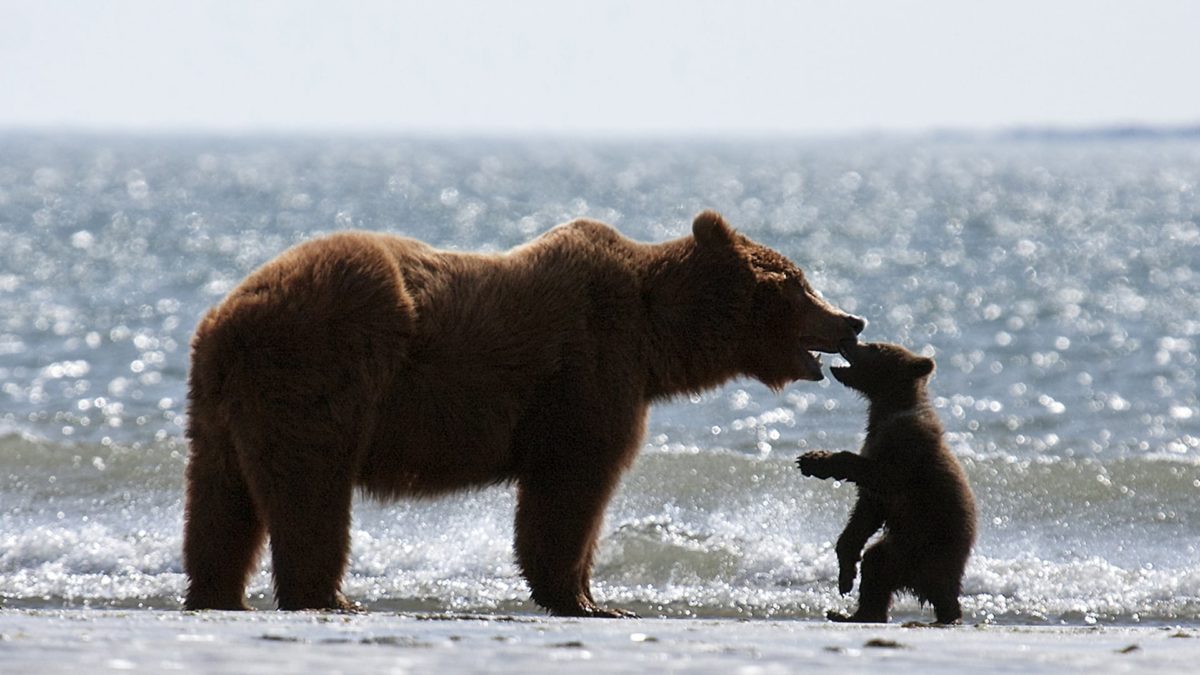Salmon, pursued by a bear
The first few minutes of Bears, created by nature documentary powerhouse Disneynature, dangle a threat in front of viewers. Alaskan Brown Bears have less than a 50% survival rate in their first year, we learn, and here are two baby bears. The implication is that one, possibly both, of these adorable little cubs is in danger of dying before the end of our 77-minute runtime.
Of course, any rational viewer knows that there is no way that Disney is going to allow any of its ursine protagonists to die on screen. It’s an empty threat. And I think this serves as an overall lens onto the conundrum of this kind of documentary filmmaking (one that’s deconstructed in the brilliant Grizzly Man documentary, which incidentally depicts the same kind of bears in the same National Park as Disneynature’s Bears): What we’re viewing is a sanitized lens of nature, wrapped with a bow to be pleasing and gentle and affectionate.
But the harsh Alaskan wilderness is none of those things. And moments of brutality sneak their way in; to the credit of directors Alastair Fothergill and Keith Scholey, they are not completely masking the harsh truth of “survival of the fittest” so much as packaging it into something unobjectionable. There are moments of brutality: fish guts as bears devour salmon, allusions to impending starvation, descriptions of animals (including other bears) who want to devour the bear cubs as tasty snacks.

The story we’re given, via narration by John C. Reilly, is that mama bear Sky and her two new cubs, Scout and Amber, are on the prowl for food; specifically, a source of salmon so they can fatten up in time for the next hibernation. We also meet a couple other bears, Magnus and Chinook, plus a feisty wolf named Tikaani.
(Perhaps it’s just the proximity to Grizzly Man, but the projection of names and personalities onto these wild creatures feels kind of ooky. I never got over it.)
The film starts with Sky, Scout, and Amber hibernating in a mountain shortly after birth. These early shots are necessarily close up and intimate. It’s not until they leave their cave and we get our first drone shots of the snowy mountaintops that the real strength of Bears becomes obvious.
Bears features some of the most beautiful, gripping footage of the Alaskan wilderness and brown bears that I’ve ever seen and, I would wager, has ever been filmed. The Disneynature team demonstrates tremendous capability and skill for capturing the scope and beauty of the subject: We get a wide variety of shots, from drones, long establishing shots, tracking shots, close-ups, etc. There’s a tremendous artistry to some of the compositions, with colorful nature popping off the screen at every moment. These wild animals, full of personality and expression, are captured in sharp, clear cinematography.

As the film progresses, we follow Sky, Scout, and Amber through a variety of ecosystems, from marshes to woods to rocky hills to the promised land of the salmon. And then they head back to the mountains to hibernate. There’s something reassuring about the cycles of nature. The Circle of Life. Sunrise, sunset. Alaskan brown bears sleep, eat fish, sleep some more. And so Bears wraps right where we started. A comfortable end to a comfortable movie.
The cherry on top of the movie is Reilly’s narration. He provides a goofy tenor to the bumbling baby bears and gets some hilarious line deliveries in some of the documentary’s lighter moments, like Scout getting a clam stuck on his claw or Magnus trying to woo a female. He’s a fun guide to our hour-and-a-quarter with these bears.
Is It Good?
Good (5/8)
Dan is the founder and head critic of The Goods. Follow Dan on Letterboxd. Join the Discord for updates and discussion.

